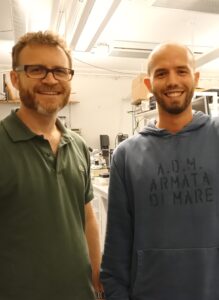Acoustofluidics seems an enigmatic term, but it already says everything one needs to know about it: acousto- relates to sound, while of course –fluidics regards fluids. In a nutshell, at the Experimental Acoustofluidics Group at Lund University we use sound to manipulate objects suspended in liquids flowing in micro-structures. Being part of the Biomedical Engineering Department, our main focus is on biological fluids, such as blood and urine, having as a goal the separation of the different components present in those complex mixtures, thus making subsequent analysis faster and easier.
Our group has recently developed a new variant of acoustofluidics that enables size-independent separation, relying on the different physical properties of the suspended objects, like density and compressibility. My colleagues and I have now the exciting task to investigate this technique more thoroughly and to find new possible applications in which acoustofluidics can be successfully applied. We aim at developing acoustofluidic instrumentation for detecting bacteria in freshwater, with the vision of a system in which automated microfluidic devices are installed in the water grid, connected with the competent authorities to communicate anomalies in real time. To achieve this, we need a deeper and more complete understanding of the physics behind the interaction of sound and liquids. My project focuses on increasing the acoustic energy that we input in our devices and to investigate non-linear effects in acoustofluidics that have yet to be mapped.
Enrico Corato


